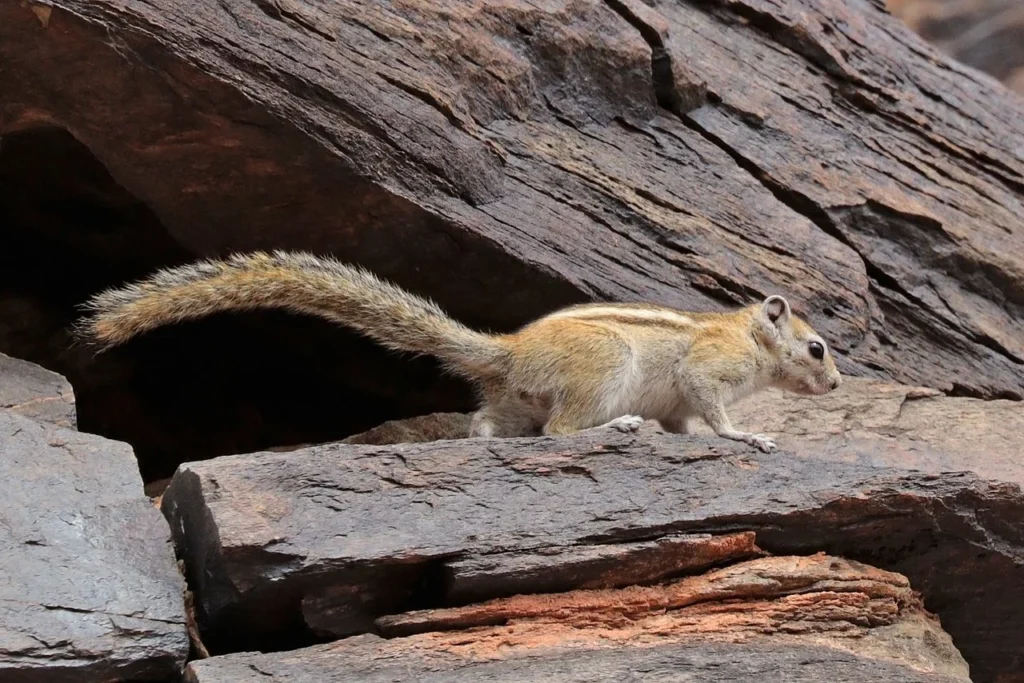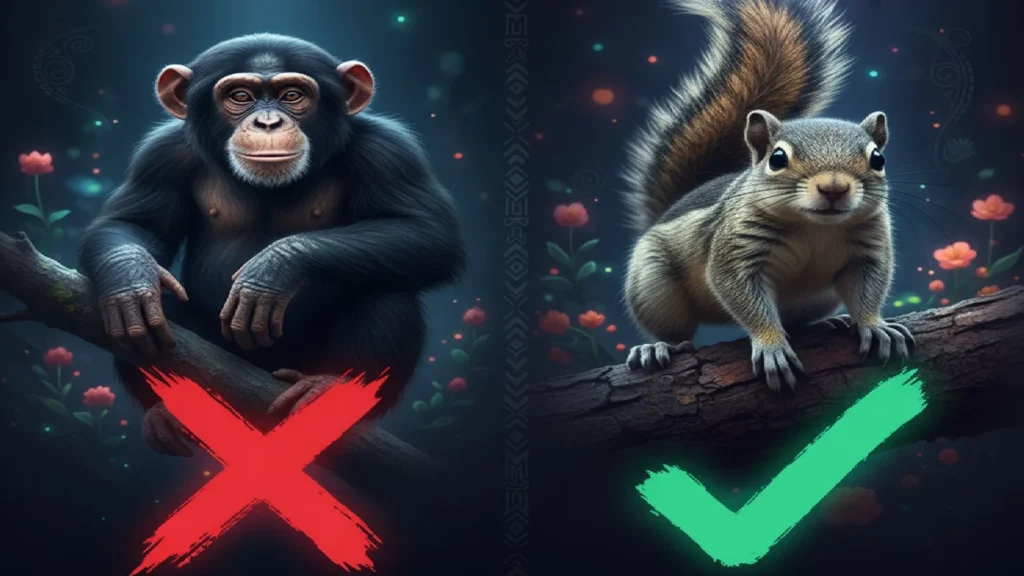In 1958, Danish scientists at the State Serum Institute in Copenhagen made a discovery that would haunt virology nomenclature for the next six decades. Laboratory monkeys imported from Singapore developed mysterious pox-like lesions across their bodies—and researchers named the culprit “monkeypox virus”.
There was just one problem: monkeys don’t naturally carry or transmit this virus.
For 67 years, the world has called this disease “monkeypox” despite mounting scientific evidence that the name is fundamentally incorrect, stigmatizing, and dangerous. The real reservoir? African forest-dwelling rodents—particularly rope squirrels—that have been infected with this virus for centuries.
The Copenhagen Outbreak That Named a Virus Wrong
Between 1958 and 1968, multiple outbreaks of a strange pox disease occurred in laboratory primates across Europe and North America—all in facilities conducting polio vaccine research.
The first outbreak struck in August 1958 at an animal facility in Copenhagen that received continuous shipments of Asian monkeys, mostly cynomolgus macaques (Macaca fascicularis) and rhesus macaques (Macaca mulatta) from Singapore.
Two months after arrival, six out of 32 monkeys developed vesiculopustular skin eruptions covering their entire bodies—trunk, tail, face, limbs, palms, and soles. Despite the alarming appearance, the monkeys’ general health remained “relatively normal,” and the lesions crusted over and healed within two weeks.
Four months later, a second outbreak hit another Singapore shipment: 11 out of 120 animals developed the disease, with 12 more showing healed lesions a month later.
Danish virologist Preben von Magnus isolated the virus from pustules and confirmed it belonged to the orthopoxvirus genus—the same family as smallpox and cowpox. Because the outbreak occurred in monkeys, researchers named it “monkeypox virus”.
Similar outbreaks followed in the United States, Netherlands, and France throughout the 1960s—always in captive primates used for vaccine production.
The Asian Monkey Mystery That Should Have Changed the Name
Here’s where the story gets strange.
If monkeys were the natural hosts of monkeypox virus, then wild monkey populations in Asia—where all the infected laboratory animals originated—should have high levels of antibodies proving prior infection.
Between 1958 and 1968, scientists tested more than 1,000 monkeys from India, Indonesia, Malaysia, and Japan. The results?
Every single test came back negative for monkeypox antibodies.
Scientists thought the virus reservoir was in Asia,Yet, blood samples from more than a thousand monkeys in India, Indonesia, Malaysia and Japan tested negative for monkeypox antibodies.”
The laboratory monkeys hadn’t been infected in their native habitats. They’d contracted the virus after arriving in Europe—either during transport or at the facilities themselves.
This should have been a massive red flag that monkeys weren’t the natural reservoir. But the name stuck.
1970: The First Human Case Reveals the True Source
On August 24, 1970, a nine-month-old boy developed a rash in the Basankusu Territory of what was then Zaire (now the Democratic Republic of Congo).
He lived in the tropical rainforests of Central Africa—an area populated by monkeys. Doctors initially suspected smallpox, but laboratory testing revealed something different: monkeypox virus.
This was the world’s first confirmed human case, occurring just two years after the DRC reported its last smallpox case. The boy was the only member of his family without a smallpox vaccination.
Tragically, while the child recovered from monkeypox, he contracted measles days later and died.
But here’s the critical detail doctors couldn’t establish: they were unable to prove the boy had recent contact with an infected monkey. The virus may have come “from another source”.
That “other source” would take another 15 years to identify.
1985: The Real Culprit Is Finally Caught
In 1985, scientists in Zaire finally caught the smoking gun: a symptomatic Thomas’s rope squirrel (Funisciurus anerythrus) infected with monkeypox virus.
This was the first time MPXV had been isolated from a live, naturally infected animal showing clinical disease.
Subsequent research revealed the rope squirrel connection ran deep. Between 1979 and the early 1980s, World Health Organization surveys of 43 animal species across Central Africa found evidence of orthopoxvirus infection in multiple rodent genera.
A 2023 ecological modeling study analyzing the geographic distribution of potential reservoir species concluded: “Thomas’s rope squirrel could be the main MPXV reservoir”.
The evidence was compelling:
- F. anerythrus is the only species from which MPXV was isolated and fully sequenced by independent research teams in northern DRC
- Museum specimens testing found MPXV DNA fragments in 45 out of 362 F. anerythrus specimens (12.4%) from the Congo Basin
- The ecological niche of F. anerythrus shows the “best overlap” with MPXV distribution patterns
- Recent 2025 research traced an MPXV outbreak in mangabey monkeys directly back to rope squirrels
Other African rodents also test positive for MPXV antibodies or DNA: giant pouched rats (Cricetomys), African dormice (Graphiurus), sun squirrels (Heliosciurus), and various mice species.
“I would even call it rodentpox rather than mpox or monkeypox virus,” said Dr. Leandre Murhula Masirik, the Congolese doctor who discovered the Clade Ib strain in 2023.

African rope squirrel from the Funisciurus genus.
Thomas’s rope squirrel (F. anerythrus), identified in a 2023 study
as the primary natural reservoir for mpox virus, is a member of this rodent
family -not monkeys.
How Humans Actually Get Infected (It’s Bushmeat, Not Monkeys)
In endemic African regions, mpox transmission to humans follows a clear pattern:
Primary transmission routes:
- Hunting, trapping, and consuming infected rodents (bushmeat)
- Bites or scratches from infected rodents
- Skinning, cooking, or handling carcasses of infected animals
- Contact with contaminated animal materials
WHO surveillance data from 1981-1986 found that over two-thirds of human infections could be traced to animal contact within rainforests.
Monkeys occasionally get infected too, but they’re secondary hosts who contract the virus the same way humans do: through contact with infected rodents or contaminated environments. They’re victims, not reservoirs.
The Two Clades: Why Not All Mpox Is Created Equal
The monkeypox virus has evolved into two genetically distinct clades separated by hundreds of years and geographic barriers.
Clade I (Congo Basin)
Geographic distribution: Central Africa, primarily Democratic Republic of Congo
Genetic structure: Further divided into:
- Clade Ia: The original “classical” strain identified in 1970
- Clade Ib: Newly emerged in 2023, spreading rapidly since September 2023
Case fatality rate: 1.4% to 10.6%
Clinical presentation:
- More severe disease than Clade II
- Rash starts on face, then spreads to entire body (centrifugal distribution)
- Palms and soles involved in up to 75% of cases
- Prodromal symptoms: fever, headache, backache, swollen lymph nodes, muscle aches
- Lesions progress from macules to papules to vesicles to pustules, then crust over in ~10 days
- Disease typically lasts 14-21 days
Transmission: Historically through animal-to-human contact and limited human-to-human spread. Clade Ib shows enhanced human-to-human transmission including sexual networks.
High-risk groups: Young children, pregnant women, immunocompromised individuals
Clade II (West African)
Geographic distribution: West Africa, historically separated from Clade I by the Dahomey Gap
Genetic structure: Divided into:
- Clade IIa: Original West African strain
- Clade IIb: Caused the 2022 global outbreak, predominantly affecting men who have sex with men
Case fatality rate: 0.1% to 3.6%
Clinical presentation:
- Milder disease than Clade I
- 2022 outbreak showed atypical presentations: lesions often localized to genital/anal areas rather than disseminated
- Only 72% reported prodromal fever (vs. nearly all Clade I cases)
- Lesions may be few in number or even single lesions
- Variable order of symptom onset (fever doesn’t always precede rash)
Transmission: 2022 outbreak primarily through sexual contact networks
The Name That Fueled a Pandemic of Racism
When mpox exploded globally in 2022, the “monkeypox” name unleashed a wave of racist harassment and violence.
Dr. Boghuma Kabisen Titanji, a Cameroonian-American infectious disease researcher, began receiving messages ‘likening me to a monkey’—a derogatory slur with a long, painful history against Black people.
Dr. Ifeanyi Nsofor, a Nigerian global health advocate, laid out the case: “First, there is a long history of referring to Blacks as monkeys. Therefore, ‘monkeypox’ is racist and stigmatizes Blacks. Second, ‘monkeypox’ gives a wrong impression that the disease is only transmitted by monkeys. This is wrong“.
The misinformation had deadly consequences: people in some regions killed monkeys they wrongly believed were spreading the disease.
False social media claims spread that the virus was transmitted “through sexual contact with monkeys,” fueling both racist and homophobic stereotypes.
On November 28, 2022, the World Health Organization officially retired “monkeypox” and adopted “mpox”—retaining the connection to poxviruses while eliminating racist connotations.
The geographic labels were also changed: “Congo Basin” became Clade I, and “West African” became Clade II.
67 Years of Getting It Wrong
The monkeypox story is a masterclass in how scientific naming mistakes can persist for generations, causing real harm.
1958: Virus discovered in Asian monkeys (who weren’t natural hosts)
1960s: Over 1,000 Asian monkeys test negative for antibodies—proof they’re not the reservoir
1970: First human case in DRC—doctors can’t establish monkey contact
1985: Rope squirrel identified as true reservoir
2022: WHO finally retires racist, inaccurate “monkeypox” name
2025: Evidence overwhelmingly confirms multiple African rodent species—particularly Funisciurus rope squirrels—as primary reservoirs
Yet even today, the name persists in common usage. The U.S. CDC quietly reverted to “monkeypox” terminology in September 2025, undoing three years of progress.
The virus was never about monkeys. It’s always been about rodents.
Perhaps it’s time we started calling it what it really is: rodentpox.


